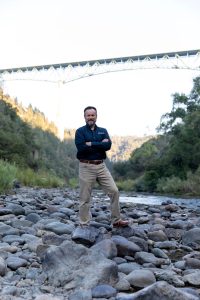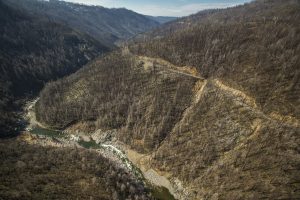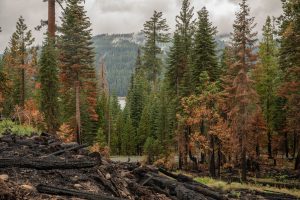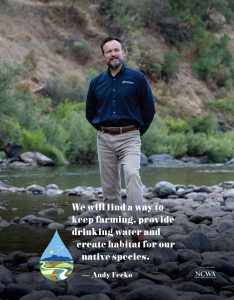
At just eight years old, Andy was set free into the woods. To be clear he wasn’t abandoned. This was the early 1980s and kids were given immense freedom to explore the outdoors on their own accord. Spared from the fears of parents today, the brown- haired boy with dust coated jeans and a t-shirt would navigate the Tahoe National Forest with his younger brother and cousins. Their mission: explore the unknown and catch as many crawdads as possible.
It was in those early adventures that Andy grew quite fond of the towering pines and bending shorelines of the valley rivers.
While attending the University of California – Davis, Andy studied natural resources and engineering, providing him with a foundation in fish biology and water delivery systems. Quite useful for someone who joined the Placer County Water Agency a few years later.
Hired on originally to help with a hydro-electric power project and Sites Reservoir, Andy says a job in water resource management was much simpler back then.
PCWA’s watershed begins at 8,000 feet, with water storage sites hovering around 5,000 feet and many of its customers in agriculture and cities located on Placer County’s valley floor which stands at or below sea level.
“For more than 50 years the challenge was to keep up with demand, but catastrophic wildfire in 2014 changed everything for us.”

The King Fire burned 97,000 acres in the El Dorado National Forest – leaving a devasting and torched landscape in its wake. Burning into the famed Rubicon area, PCWA’s water sources were impacted.
PCWA chose to take aggressive measures to mitigate future risks. Andy and his staff got to work on what is known as the French Meadows Forest Restoration Project.
The first private-public partnership aimed at thinning the forest in order to prevent major wildfires continuously devastating our environment.
“A healthier forest means better habitat for wildlife, improves the tree’s resistance to drought and diseases and improves the watershed for all species who rely on it for survival.”

The work PCWA has already done got the attention of the White House in July of 2022, as Andy is now a member of the newly- established Wildland Fire Mitigation and Management Commission. The group will play a key role in recommending ways that federal agencies can better prevent, mitigate, suppress and manage wildland fires. The members additionally, will aide in policies and strategies on how to restore the lands already affected by wildfire.
The PCWA is tackling habitat and migration issues below and above Folsom Dam. The agency has partnered with other water resource managers in order to help migrating salmon reach their destination though the construction of fish screens and newly- adopted water release schedules.
Andy is looking at all of this today through the scope of the boy who wandered the woods, the teenager that cast his line in the river and to the man who is responsible for creating a functioning water system.
His love for the outdoors, studies in biology and desire for efficient engineering was once a rare find among water managers – but today, his experience and outlook is almost required. “We are charged with bringing our ecosystem back into balance.
We can and we will find a way to keep farming, provide safe drinking water in our homes and create habitat for our native species. It may not happen overnight, but we are taking steps today that will positively impact the future of California.”
Listen to the podcast here.




